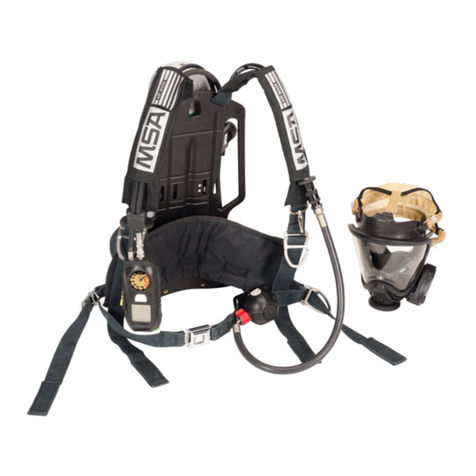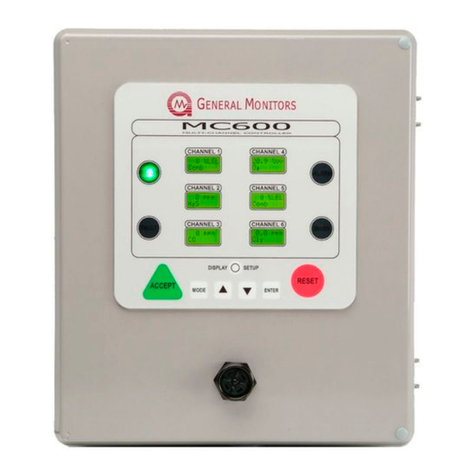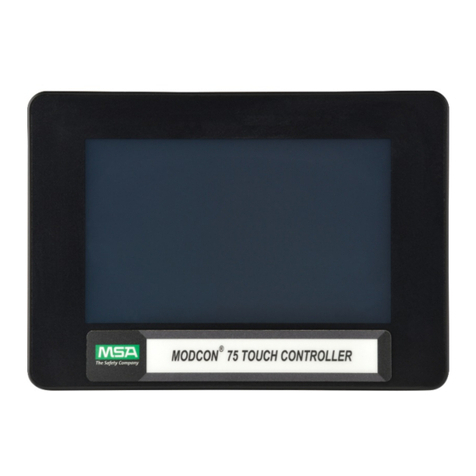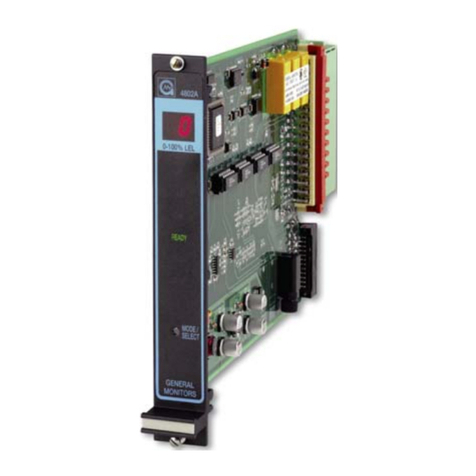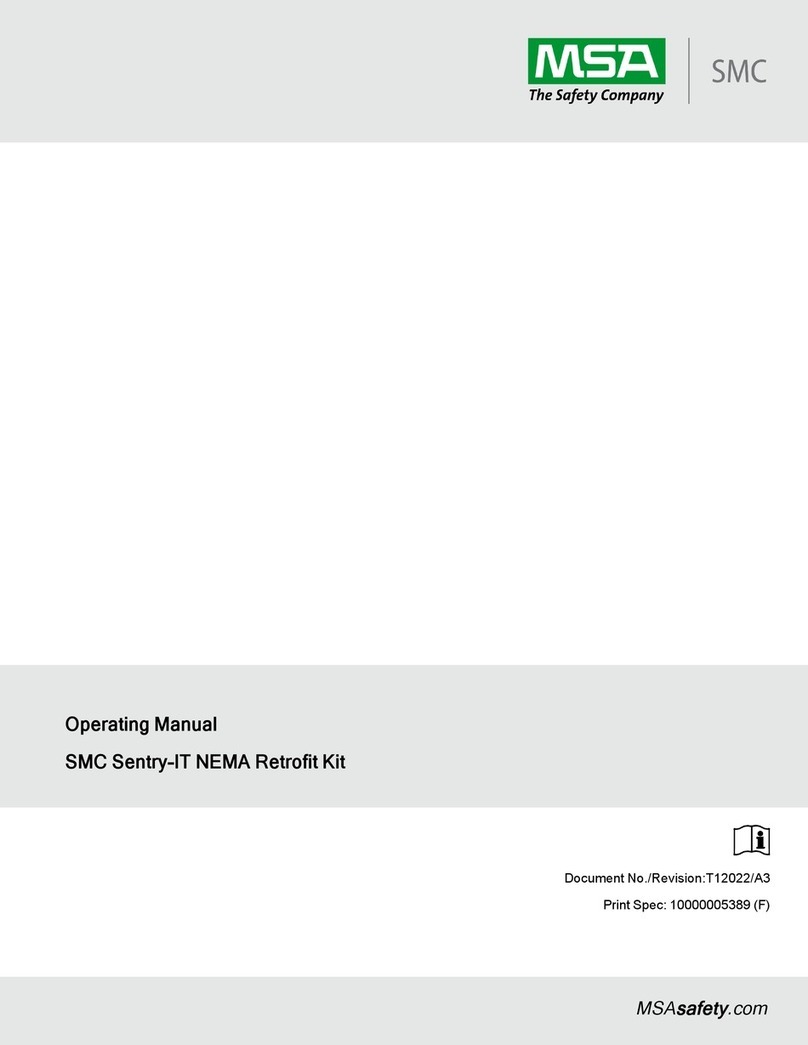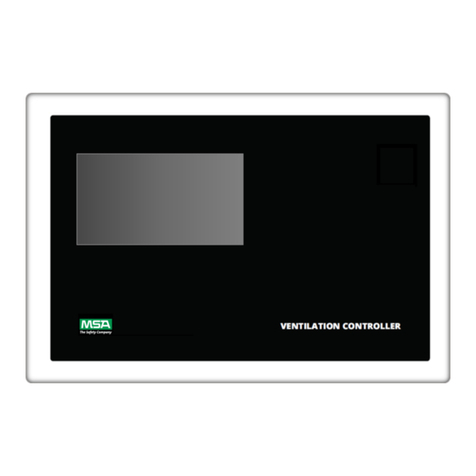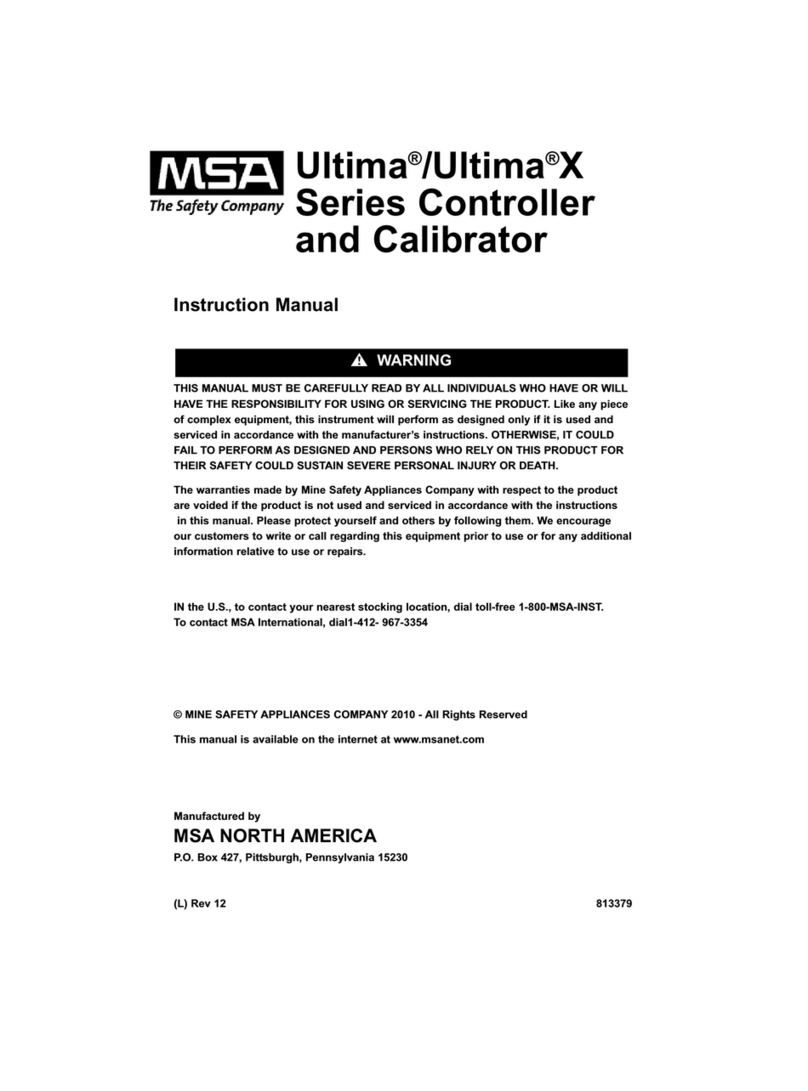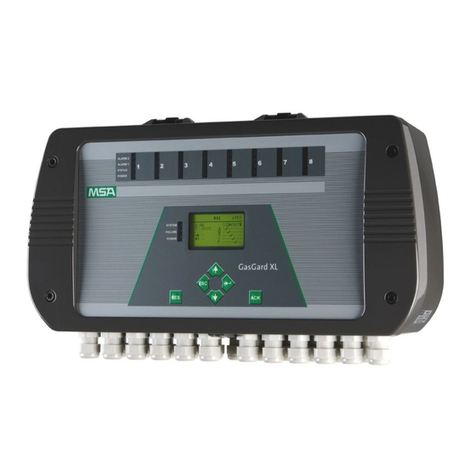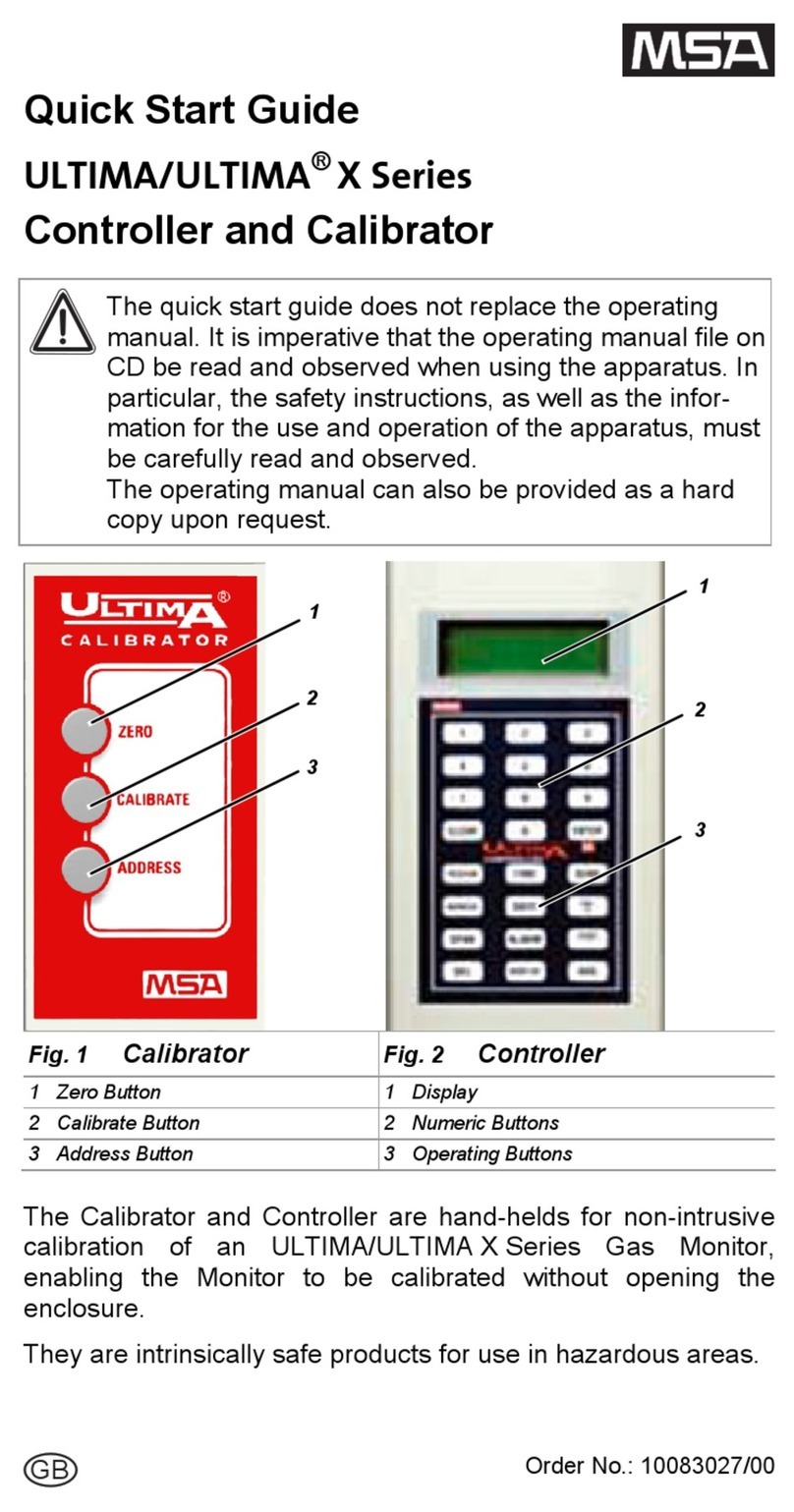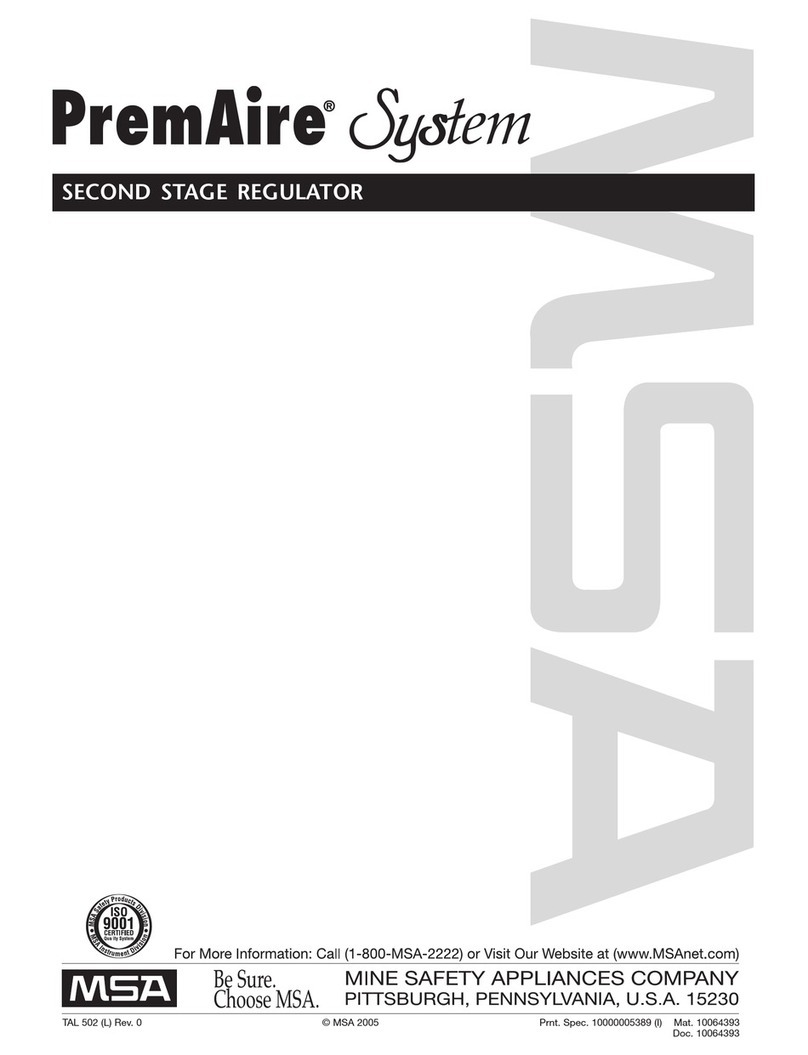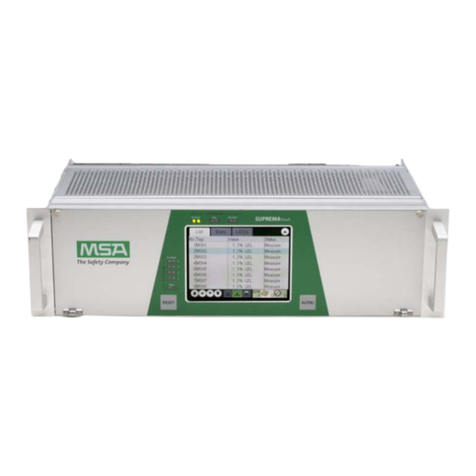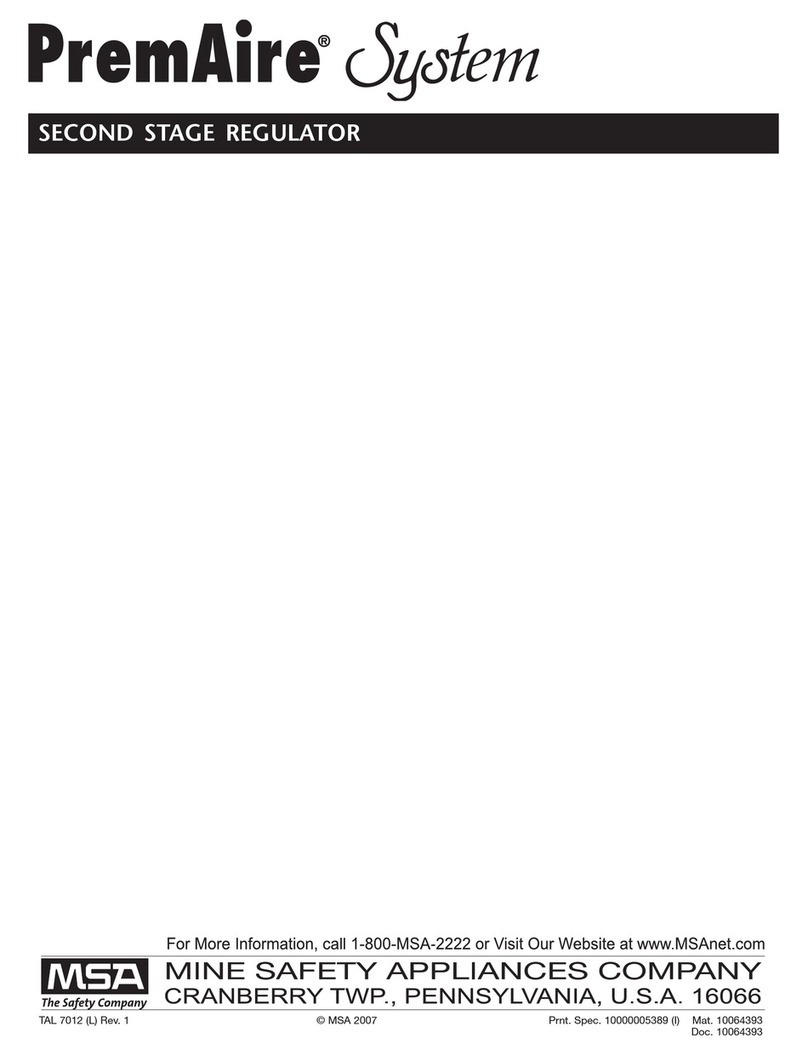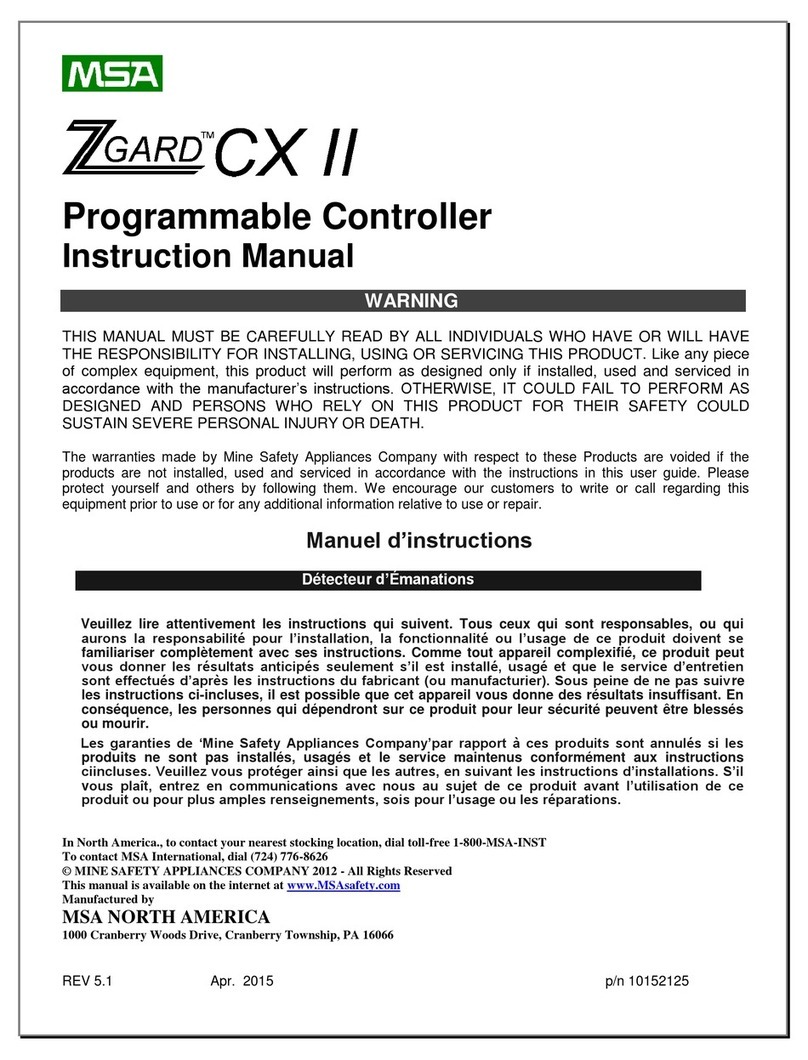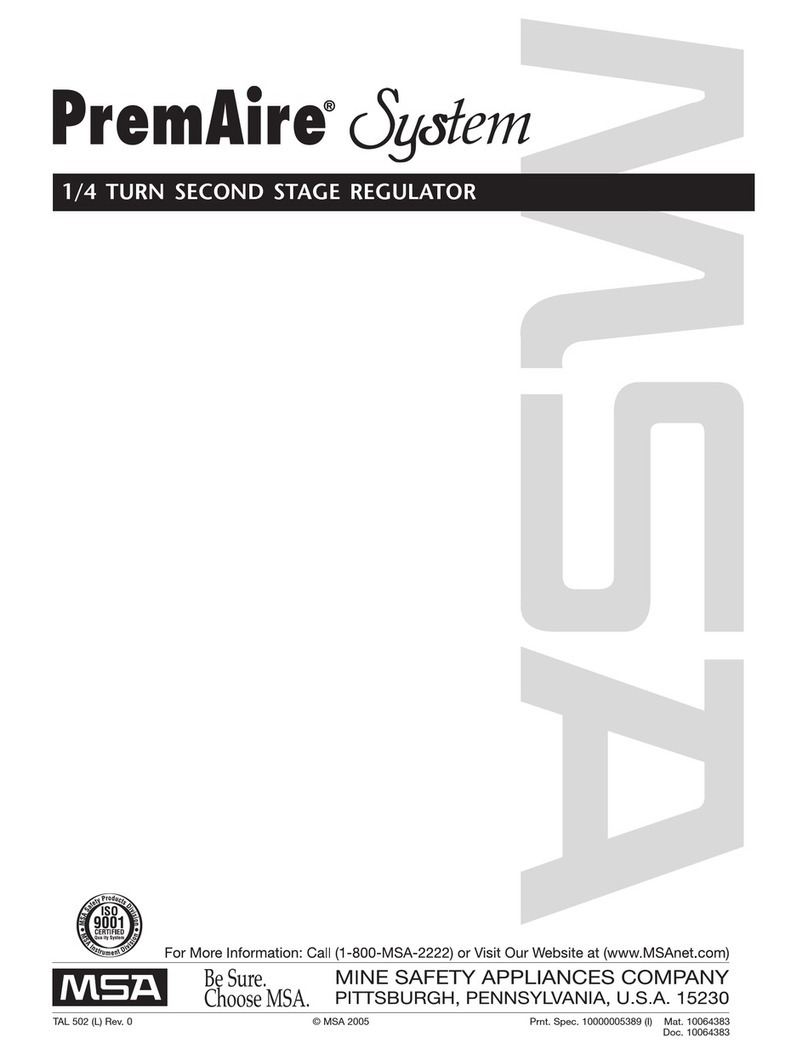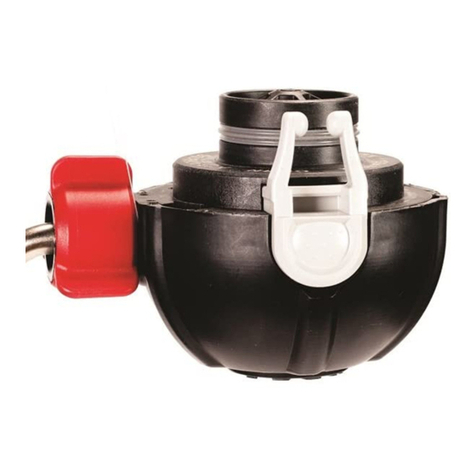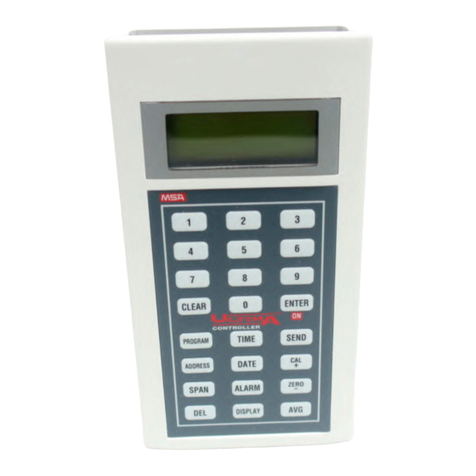
1 Safety Regulations
US SENTRY io 5
1 Safety Regulations
Read this manual carefully before using the SENTRY io. The SENTRY io will perform as designed only if it is used and
maintained in accordance with the manufacturer's instructions. Otherwise, it could fail to perform as designed and persons
who rely on the SENTRY io for their safety could sustain serious personal injury or death.
The warranties made by MSA with respect to the product are voided if the product is not installed and used in accordance
with the instructions in this manual. Please protect yourself and your employees by following the instructions. Read and
observe the WARNINGS and CAUTIONS inside.
Make sure any personnel who will be installing, using, or maintaining the SENTRY io have access to the user manual. If
electronic access to the user manual is not possible, print a copy of the manual and keep it in an accessible location near
the SENTRY io. Failure to obey the following guidelines and/or incorrect installation, operation, servicing, or maintenance
of the SENTRY io can cause incorrect operation of the control unit.
1.1 Liability
MSA accepts no liability in cases where the device has been misused, used inappropriately or not used as intended. MSA
accepts no liability in cases where damage or injury is caused by wear and tear, neglect or failure to carry out inspection
and maintenance procedures. The selection and use of the device are the exclusive responsibility of the employer and/or
individual operator. Warranties and guarantees made by MSA with respect to the device are voided, if it is not used,
serviced or maintained in accordance with the instructions in this manual.
1.2 Warnings
WARNING!
lInstall, operate, and maintain the SENTRY io in strict accordance with its labels, cautions, warnings, instructions, and
stated limitations.
lFor any maintenance procedure provided in this manual, use only genuine MSAreplacement parts. Repair or
alteration of the SENTRY io beyond the scope of these maintenance instructions or by anyone other than authorized
MSAservice personnel can cause incorrect operation of the SENTRY io. See 10 Ordering Information for available
parts.
lWiring procedures described in this manual are intended for proper functioning of the devices under normal
conditions. Always be certain that all wiring and equipment installation meets or exceeds the latest revisions of the
appropriate National Standards, Electrical Codes and all local ordinances. If in doubt, consult the Authority Having
Jurisdiction (AHJ) before wiring the system.
lNever operate the SENTRY io without a connection to Earth ground. Failure to connect the device to Earth ground
can result in electrical shock. Electrical shock can cause damage to the SENTRY io and injury to personnel.
lDo NOT use the SENTRY io in hazardous environments beyond the limits indicated on the product label.
lNo internal power shut-off switch, breaker, or fuse is provided within the SENTRY io enclosure. An externally located
power shut-off switch or breaker is recommended to enable removal of power from the system.
lSome devices and components covered within this document may contain semiconductor devices susceptible to
damage by electrostatic discharge. An electrostatic charge can build up on the skin and discharge when an object is
touched. Always observe normal precautions for handling electrostatic sensitive devices, such as use of a wrist strap
(if available) and proper grounding, when installing the equipment described within this manual.
lExternal alarms and other mitigation devices must be disconnected prior to performing system tests to avoid causing
interruption to facility operations. Ensure that external alarms and other mitigation devices are reconnected
immediately after system testing.
lDo not exceed the relay contact rating listed in 7 Technical Specifications or relay operation may fail.
lFor all devices connected to the SENTRY io, review and follow the device manuals for guidance and instruction on
inspection, calibration, operation, and maintenance.
Failure to follow these warnings can result in serious personal injury or death.
